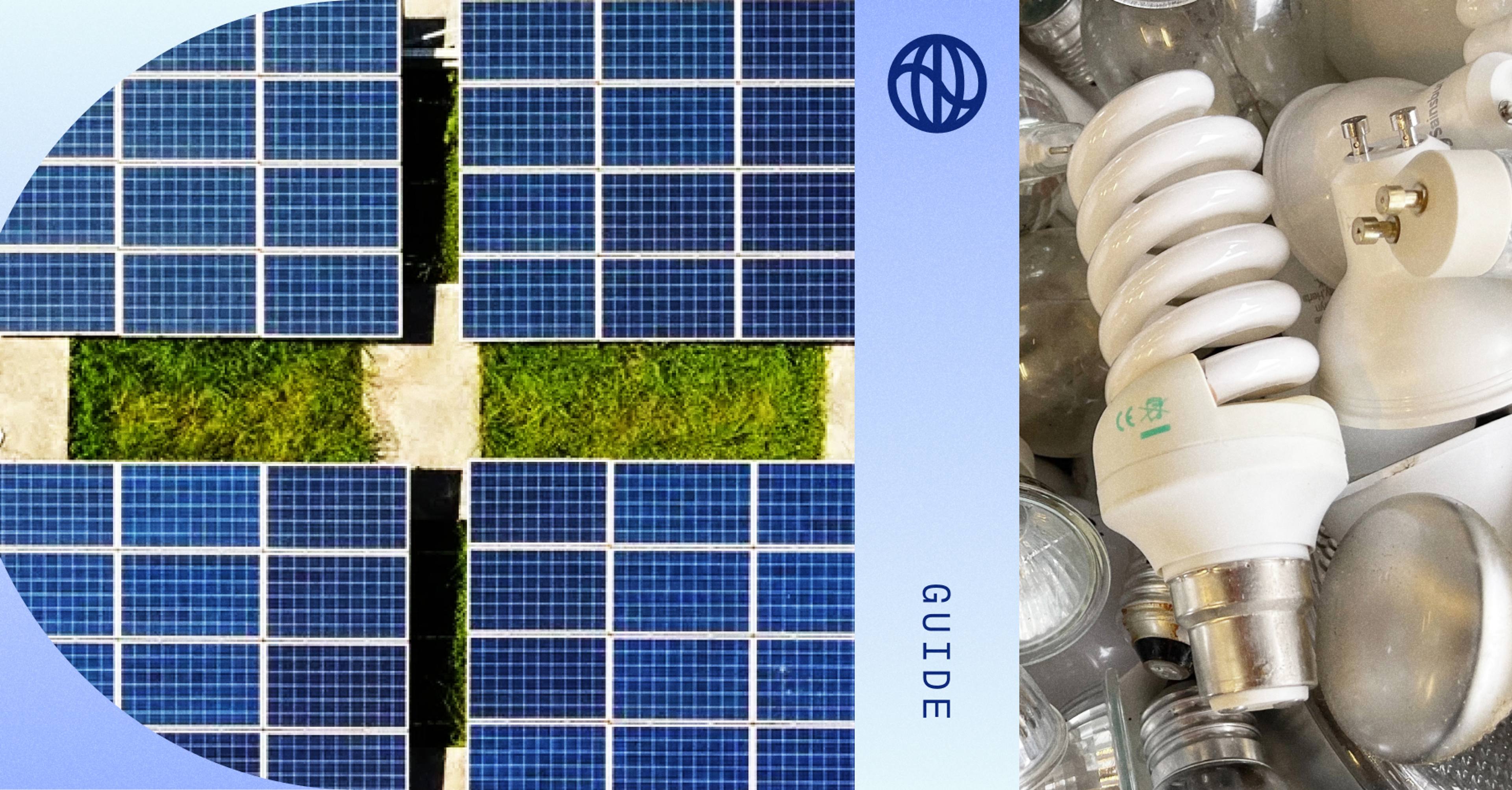

What is the EU's Green Claims Directive?
In March, the European Commission unveiled the Proposed Green Claims Directive, an ambitious proposal targeting greenwashing in the EU. The proposal is the latest response to increased consumer concerns about the reliability of environmental marketing claims. A 2020 European Commission study found that 53.3% of companies’ environmental claims examined were vague, misleading or unfounded, and 40% were completely unsubstantiated.
If adopted, the Proposed Green Claims Directive would set strict rules on the substantiation, communication, and verification of green claims and provide more detail on how green claims must be made. The proposed Green Claims Directive would supplement last year’s Proposed Greenwashing Directive, which, if adopted, would expand European consumer protection rules to broadly prohibit misleading sustainability claims broadly.
This new rule has the potential to hugely impact companies doing business in the EU. To break down the essentials of the directive and its implications, Watershed asked two experts in the field to partner with us in creating a guide for companies:
Carol M. Browner is a senior of counsel in Covington’s ESG practice. Carol M. Browner brings nearly four decades of experience advising on environmental and energy policies affecting global energy, environmental, public health, and business matters. She provides counsel to industry leaders in the energy, transportation, and consumer product sectors on regulatory matters, environmental impact issues, corporate sustainability approaches, and strategic partnership development to advance clean energy, ESG, and other business priorities. Before Covington, Carol served as Assistant to President Barack Obama and Director of the White House Office of Energy and Climate Change Policy, and was the longest serving Administrator of the Environmental Protection Agency.
Rosa Oyarzabal is an associate in Covington’s Life Sciences and ESG teams. Rosa has significant experience in the EU food and advertising rules, including green claims, and regularly advises clients in the plant-based sector on these other topics. Rosa regularly assists clients on CSRD and CS3D, including scope, timeline, and implementation at a national level, as well as on biodiversity legislation like CITES, the upcoming EU Deforestation Regulation, and the Nagoya Protocol.
This guide covers what companies need to know about the proposed Directive.
Why did the EU create the Proposed Green Claims Directive, and how does it fit in with the Proposed Greenwashing Directive?
Currently, EU law doesn’t explicitly regulate environmental claims. Instead, general consumer protection rules that prohibit misleading claims apply to environmental claims. The European Commission’s Notice on Directive 2005/29 on Unfair Commercial Practices applies general consumer protection rules to environmental claims, providing guidance on when the use of green claims is “misleading.” At a national level, some Member States have recently adopted their own rules detailing the appropriate use of certain green claims (such as France), but most states do not regulate these claims. The result is an inconsistent patchwork of EU and national regulations that companies often find difficult to navigate.
The Proposed Green Claims Directive, together with the Proposed Greenwashing Directive, is expected to create a harmonized set of rules on the substantiation of voluntary green claims made in a business-to-consumer (“B2C”) context. The two Directives work in parallel: where the Green Claims Directive does not apply, the Greenwashing Directive applies as a “catch-all.” The Green Claims Directive sets specific (and strict) substantiation, communication, and verification rules for environmental claims, including comparative and forward-looking claims. Meanwhile, the proposed Greenwashing Directive has a broader reach: it applies to not only environmental sustainability claims but also social sustainability claims, including fair trade and forced-labor claims. The heart of the Greenwashing Directive is a broad prohibition on misleading advertising, and a series of bright-line prohibitions: among other things, the Proposed Greenwashing Directive prohibits “self-certification”, the use of generic green claims (such as “eco-friendly”), and making voluntary claims that reflect legal requirements (e.g., stating “recyclable” if required by local rules).
Which companies and which types of environmental claims would the Proposed Green Claims Directive apply to?
The rules would apply to almost all companies doing business in the EU in a B2C context, whether based in the EU or a third-country. This includes companies selling into the EU through e-commerce, provided that they are targeting EU consumers (e.g., addressing EU persons through EU or national websites, social media, or EU-specific ads and content). The Directive excludes microenterprises, which are those with fewer than 10 employees and an annual turnover below €2 million.
As proposed, the Green Claims Directive would apply to all explicit environmental claims, either in a text format or contained on an environmental label (e.g., a logo). This includes claims about products or parts of products (e.g., “recyclable packaging”) and about organizations themselves (e.g., “as a company, we want to reduce 50% of our carbon emissions by 2030”).
It’s not yet clear if the EU plans to introduce new rules for implicit environmental claims, like using “environmental” themed colors or images on product packaging. If not, these would be covered by the Greenwashing Directive and the national rules that implement it, which could lead to variation in how different national authorities regulate implicit environmental claims.
As noted earlier, the Green Claims Directive won’t apply to non-environmental sustainability claims, which are subject only to the Proposed Greenwashing Directive. The Green Claims Directive also won’t apply to environmental claims that are subject to more specific rules, such as EU rules for organic claims and energy labeling. The Directive also excludes reporting submitted as part of the reporting obligations for companies under the EU’s Accounting Directive and Corporate Sustainability Reporting Directive (“CSRD”).
How will companies need to substantiate Green Claims under the Directive?
To substantiate claims, companies would need to complete a 10-point assessment following strict requirements that will, in practice, curtail companies’ ability to make certain environmental marketing claims. Among other things, companies would need to:
- Specify the aspect of the product, product life cycle, or company life cycle that the claim applies to;
- Provide scientific evidence for the claim;
- Demonstrate that the claimed environmental impact is significant from a life cycle perspective, and is better than mere compliance with law or common practice;
- Clarify if the claimed environmental benefits result in any negative impacts; and
- Account for and disclose greenhouse gas emissions offsets separately from greenhouse gas emissions reductions.
Interestingly, the Proposed Green Claims Directive seems to put significant emphasis on life cycle impacts, which suggests that claims related only to narrow aspects of the product (e.g., recyclability) may need to be supported by full life cycle assessments.
As proposed, comparative and future claims would require extra substantiation. Making comparative claims would become significantly more difficult, as the proposal requires a “like-for-like” comparison. Companies would no longer be able to rely on external sources (e.g., academic papers) to make claims about its own products, or compare its products to competitors. Moreover, if making claims about future environmental performance, companies would be required to commit to specific, time-bound milestones for improvements that relate to their “own companies and value chains.” This is important, as in principle it may exclude the use of offsets to support forward-looking claims.
Companies would also be required to include—either on the physical product, or through a QR code or link next to the claim—all the background information, assessments, standards, data, and information that support the claim. If relevant, companies would also have to give instructions to the consumers on how to use the product so that it meets the claimed environmental performance (e.g., if the performance relates to recyclability, how to dispose of the product).
Finally, companies would be required to submit all explicit green claims for verification by a third-party accredited by Member States to check the compliance of green claims with the Proposed Green Claims Directive and issue a certificate of compliance. This would create an added layer of administrative burden (and costs) for companies.
What do you find clients thinking about the Proposed Green Claims Directive have misunderstood or are most nervous about?
The Proposed Green Claims Directive has become a hot topic among companies, especially those who are currently investing in sustainability and green initiatives, and want to ensure they can showcase their efforts while future-proofing their claims. While many welcome the proposal as necessary to ensure a level playing field, the Directive still presents concerns. Some key issues include:
- Harmonisation across Member States in the EU. As the EU’s green claims rules come in the form of a Directive, Member States will have to transpose its requirements into their national rules. Many companies worry whether the Directive will be a floor, not a ceiling, on regulation. In principle, since the aim of the Directive is to harmonise the approach across the EU, it could be a ceiling -- but it remains to be seen whether some vocal countries, like France, will try to bolster the Directive during the negotiations between the Council of the EU and the European Parliament.
- Environmental labels and labelling schemes. Environmental labels and labelling schemes (i.e., certification schemes) would also be heavily regulated. If the Green Claims Directive is adopted, all labels and labelling schemes would need to be approved. Further, if the Proposed Greenwashing Directive is adopted, companies won’t be able to create their own environmental labels to self-certify. To be approved, all labels and labelling schemes would have to comply with transparency and governance requirements (including independence), and show that they offer an added value in terms of their environmental ambition compared to existing labels. This would create some competition among existing labels (including those from non-EU countries) to continue operating in the EU market. Not all would survive. This creates uncertainties for companies that are looking to get their products or activities certified now, and that worry their investment will not pay off in the short- to mid-term.
- Self-certification. Some companies have heavily invested in internal compliance programs to create products that have a positive or neutral impact on the environment. These efforts are sometimes accompanied by self-certification efforts (e.g., a company’s own logos), which would need to be phased out if the Green Claims Directive is adopted.
- Company-related claims. Before the Directive, claims about a company’s efforts to improve their own environmental impact over time, were considered “corporate information” instead of “advertising” and thus not regulated under EU Consumer protection rules. Under the proposed Directive, these claims would be subject to the strict substantiation requirements we discussed, which may require revisions to some companies’ communication strategies.
What does the Green Claims Directive say about the consequences of unsupported environmental claims?
If passed, the environmental claims that companies make would be subject to strict substantiation requirements, and prior certification by third-party verifiers. Crucially, the proposal would require Member States to fine companies in a way that is sufficiently “effective, proportionate and dissuasive” if they make unsupported environmental claims. These fines must reflect any unjust gains from deceptive claims and, in some cross-border cases, must be at least 4% of annual turnover. Penalties can also include confiscating goods and barring companies from public procurement contracts up to 12 months.
When do we expect the Proposed Directive to start applying to companies?
The Commission has published its proposed legislative text, which the European Parliament and Council must now review as part of the EU’s ordinary legislative procedure. While the legislative process typically takes around 18 months, there may be a chance that the European Parliament and Council speed up the process to adopt the Directive ahead of the European Parliament’s elections in May 2024.
In any case, once adopted, Member States would have 18 months to implement the Directive into their national rules, designate third-party verifiers, and start enforcement. Even on an accelerated timeline, Member States are unlikely to fully implement the Directive until sometime in 2025.
What should companies with business in Europe do to prepare for the rules?
While the implementation of the Green Claims Directive is years away, and the text of the legislation may still change during the legislative process, the proposed text already gives a good enough sense of where the EU is heading. In addition to monitoring this regulatory process -- which Covington’s public policy team can help with -- companies are advised to start vetting their environmental (and other sustainability) claims against the substantiation and communication requirements of the Proposed Green Claims Directive.
It’s likely that some claims will need to be amended or supplemented with additional evidence, which will require time and resources. Companies can start by prioritising key claims, and begin developing internal compliance systems to ensure a smooth transition into the new regime. Covington is happy to assist with any queries on this regard.
This article is made available by Covington & Burling LLP & Watershed Technology, Inc. for educational purposes only as well as to give you general information and a general understanding of the law, not to provide specific legal advice. There is no attorney client relationship between you and Covington & Burling LLP. This article should not be used as a substitute for competent legal advice from a licensed professional attorney in the relevant jurisdiction.












